
I’m excited to share my insights about this unique breed. It’s a designer dog that’s a mix between a German shepherd and a Labrador retriever. As you might expect from both parent breeds, it’s a large dog with a lot of energy. You may also hear this hybrid called a Labrashepherd, although the Sheprador name is more common.
A German Shepherd Lab Mix can be quite sizable, weighing anywhere from 50 to 85 pounds and standing up to 27 inches tall. Their fur falls somewhere between that of a Labrador and a German Shepherd, with a medium-length coat that can come in various colors like tan, black, chocolate, or a mix of shades.
As someone who’s shared a home with two wonderful German Shepherds, I can tell you that if you’re new to dog ownership, a German Shepherd Labrador Mix might not be the easiest choice. They’re on the larger side and need consistent training. But, if you have the time and skills to work with them, they can turn into fiercely loyal companions who will protect you.
Many folks, including some of my friends, opt for a Sheprador as their family pet because they tend to be less barky, except when alerting you of potential intruders. To keep them happy, make sure they get plenty of walks and mental stimulation since they can get bored easily. Without enough to do, they might decide to redecorate your furniture. Keep reading for more intriguing insights about this mixed breed.
TABLE OF CONTENTS
- German Shepherd Lab Mix Quick Summary
- German Shepherd Labrador Mix Parent Breeds
- Sheprador History
- German Shepherd Lab Mix Physical Characteristics
- Taking Care of a Lab Shepherd Mix
- Training a German Shepherd Lab Mix
- German Shepherd Lab Mix Health Issues
- German Shepherd Lab Mix Cost
- Should You Get a German Shepherd Lab Mix?
- FAQs on German Shepherd Lab Mixes
- A Remarkable Blend of Loyalty and Intelligence
- Other Labrador Retriever and German Shepherd Mixes
German Shepherd Lab Mix Quick Summary
German Shepherd Labrador Mix Parent Breeds
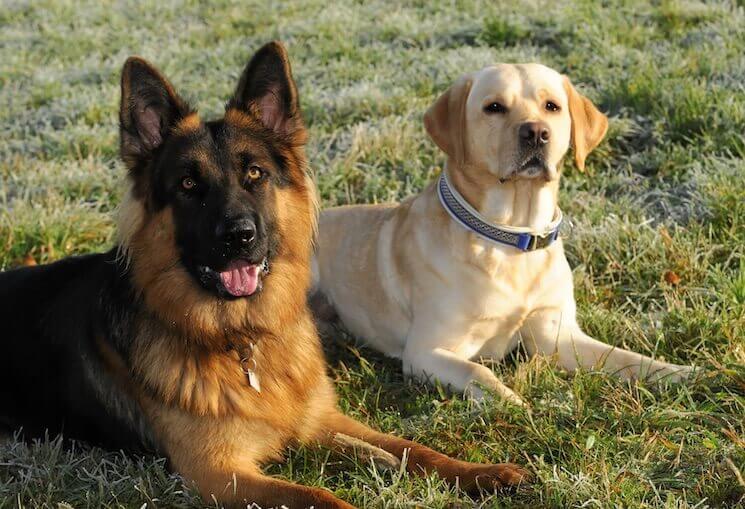
From Adobe Stock
German Shepherd
Origin
These dogs came from Germany back in the late 19th century, all thanks to Captain Max von Stephanitz. He wanted to make a special herding dog that was super smart and could work with precision. Hence, the first German Shepherd, named Horand von Grafrath, was bred for herding and keeping livestock safe.
Physical Characteristics
German Shepherds are medium to large-sized dogs. The guys stand about 24 to 26 inches tall at the shoulder, while the ladies are a bit smaller at 22 to 24 inches. As for their weight, it’s usually between 50 and 90 pounds.
These dogs have a double coat, which means they’ve got two layers of fur. It’s dense, straight, and comes in different colors like black and tan, sable, all black, or all white. One thing you’ll notice is their pointy ears, which not only look expressive but also help them hear even really quiet sounds.
Their bodies are well-proportioned with strong muscles, and their backs are straight with a gentle slope toward the tail. They have short to medium-density fur that tends to shed quite a bit. And if they have some Labrador in their mix, their coat colors might take after the German Shepherd side.
Temperament and Behavior
I’ve had the pleasure of getting to know German Shepherds quite well, and they’re truly remarkable in terms of temperament and behavior. They’re not just smart; they’re often considered one of the most intelligent dog breeds. This means they learn quickly and can solve problems effectively.
But intelligence is just one part of the package. German Shepherds are incredibly loyal to their families. They’re protective and will do what it takes to keep their loved ones safe.
Here’s something to keep in mind, though – they have a lot of energy. Regular exercise and mental stimulation are essential. They excel in various activities, like agility, following commands, and even tasks like search and rescue or police work.
When it comes to training, they’re eager learners, especially when you use positive methods. As for their behavior around strangers, it can be reserved, but proper socialization from an early age usually results in well-behaved and sociable dogs.
Labrador Retriever
Origin
The history of this breed fascinates me because the Labrador Retriever is originally from Newfoundland, Canada. These dogs were bred by fishermen who needed some extra help with their work. Labradors were specially trained to assist in tasks like retrieving fishing nets and even catching fish that tried to escape. Over time, their friendly and helpful nature made them beloved family pets.
Physical Characteristics
Labrador Retrievers are medium to large-sized dogs, and they have a robust and sturdy build. I’ve noticed that they boast a short, dense double coat that keeps them warm, especially in cold water. You’ll often see them in three standard colors: black, yellow, and chocolate.
Labradors have these warm, expressive brown eyes that you can’t help but love, and their heads are notably broad with floppy ears. They carry their straight tails proudly, and their webbed paws make swimming easy.
Temperament and Behavior
Labrador Retrievers are some of the friendliest dogs you’ll ever meet. They’re always eager to please their owners, and that’s one of the things I appreciate most about them. Labradors are incredibly social and tend to get along splendidly with kids and other pets.
I’ve also noticed that they’re quite smart and easy to train. These dogs adore the water and are natural swimmers. They have a strong instinct to retrieve objects, and you’ll often find them carrying things in their mouths. Their boundless enthusiasm and energy make them fantastic companions for all sorts of outdoor activities.
Sheprador History
Both German Shepherds and Labs are large dogs, so it’s no surprise that a German Shepherd Lab Mix is also quite big. It has a dense, thick coat, like that of a German Shepherd, while the face often looks more like a Lab.
German Shepradors have been around since the 1980s when hybrid and designer dogs became popular. This specific mixed breed is more recent, but the parent breeds are not. The Labrador dates back to the 19th Century, while the German Shepherd dates back to records in 1899.
A first-generation Sheprador is a mix of a purebred German Shepherd and a purebred Labrador retriever. To count as a Sheprador, both parents must be purebred. A second-generation Lab German Shepherd Mix is a puppy who comes from two first-generation Shepradors.
German Shepherd Lab Mix Physical Characteristics
How much a German Shepherd Lab Mix resembles a German Shepherd or a Labrador will depend on the individual dog. However, the face and body often more closely resemble a Labrador, as the nose is quite square and the body sleek. The coat usually looks a lot like a German Shepherd’s due to its density and common colorings. Rather than the characteristically pointy ears of a German Shepherd, Shepradors more often have the floppy ears of a Labrador. However, this will depend on the individual breed of the dog.
Size and Weight
The size a Sheprador grows to can vary a lot depending on its genetic make-up. Generally, they grow to around 20 – 27 inches tall at the shoulder and weigh up to 75 – 85 pounds. There is a lot of variance, so be aware that if you buy a puppy, you can never be confident how large it will grow.
Coat
The fur of a Sheprador is a medium-length waterproof double coat that’s quite dense, so it sheds a lot. Allergy sufferers may want to choose a different dog breed for this reason. The fur is straight and easy to brush, and daily brushing is recommended to help maintain the coat.
Color
Most German Shepherd Lab mixes will have either brown or blue eyes, depending on their parents’ genetics. However, pretty much all will have a black nose.
Lab German Shepherd Mix Personality and Temperament
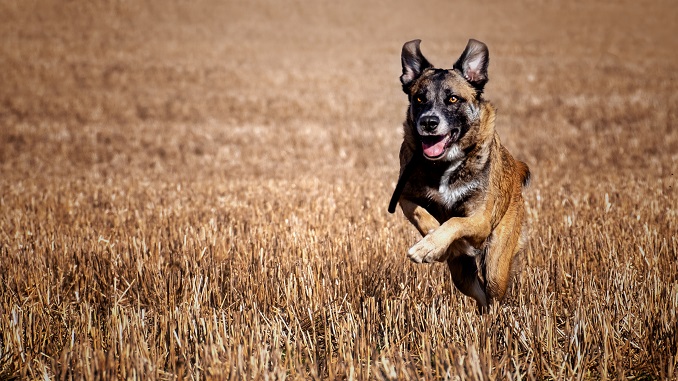
From Adobe Stock
Shepradors are loyal dogs who love being around humans. While they don’t enjoy being alone, they’re also not prone to excessive barking or howling should you be away for an afternoon. They need a big backyard where they can run around, so they are not suitable for those living in an apartment.
Lab German Shepherd mixes are incredibly affectionate and friendly and cope well with being around small children. They are also good with other dogs, so you can easily take them out to the dog park without much trouble.
Shepradors are not recommended for inexperienced dog owners. This mixed breed has high activity needs, and requires at least an hour of exercise per day. Because German Shepherd Lab mixes need to be taken on regular walks, getting one is a considerable commitment for new dog owners.
Taking Care of a Lab Shepherd Mix
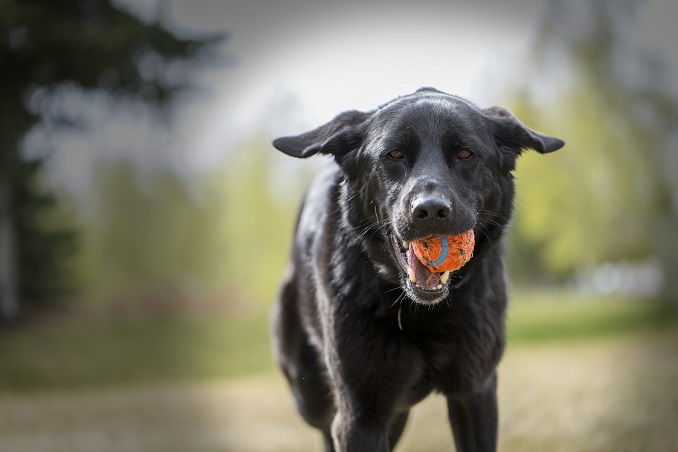
From Adobe Stock
Shepradors have a tremendous amount of fur that requires daily brushing. While they are not difficult to brush, this can be a lengthy task. They also eat a lot and need a lot of exercise, so they can be both costly and time-consuming to care for.
Feeding
These dogs are large and active, which means they require a diet that can sustain their high energy levels. A balanced diet consisting of high-quality protein and vegetables is essential to support their overall health and well-being. Additionally, it’s important to note that German Shepradors can be prone to weight gain if overfed, so portion control and proper feeding practices are crucial.
Feeding Schedule
Establishing a regular feeding schedule is key when it comes to caring for your Sheprador. Consistency in meal times helps regulate their digestion and prevents overeating. Typically, adult German Shepradors should be fed twice a day, once in the morning and again in the evening. This schedule not only ensures they receive the necessary nutrients but also helps in managing their weight. Puppies, on the other hand, may require more frequent meals as they grow, so it’s important to consult with your veterinarian for a suitable feeding schedule during their developmental stages.
Portion Control
Maintaining proper portion control is essential to prevent obesity in your German Sheprador. While the specific amount of food required may vary based on individual needs and activity levels, a fully-grown German Sheprador typically consumes around 3 cups of high-quality kibble per day. However, it’s important to monitor your dog’s weight and adjust their portions accordingly.
Factors such as age, activity level, and metabolism play a role in determining the right portion size. Be sure to consult your veterinarian to establish the ideal portion control for your furry friend.
Treats and Snacks
Treats and snacks can be a fun way to reward and bond with your German Sheprador, but it’s crucial to exercise moderation. Excessive treats can contribute to weight gain and disrupt the balance of their regular diet. Opt for healthy, low-calorie treats and use them sparingly. Be mindful of the total calorie intake from treats and ensure it does not exceed the daily recommended calorie intake for your dog.
Special Dietary Considerations
German Shepradors may have special dietary considerations based on their individual health needs. Some may have food allergies or sensitivities, requiring a specialized diet. If your dog has specific dietary requirements or health issues, consult with your veterinarian to determine the best course of action. They can recommend appropriate dietary adjustments or specialized foods tailored to your dog’s unique needs.
Fresh Water
Lastly, always ensure that your German Sheprador has access to fresh, clean water at all times. Hydration is crucial for their overall health and digestion. Regularly check and refill their water bowl to ensure they stay well-hydrated, especially during hot weather or after vigorous exercise.
Grooming
It’s an essential part of the overall care and well-being of your pet. Here’s how to do it.
Ear Care
Due to their Lab heritage, German Shepradors may have floppy ears. It’s essential to check and clean their ears regularly to prevent wax buildup, infections, and odor. Use a dog-specific ear cleaner and gently wipe the ears with a clean, soft cloth or cotton ball.
Nail Maintenance
Regular nail trimming is vital for the comfort and health of your German Sheprador. Overgrown nails can lead to discomfort and affect their gait. Use dog nail clippers or a grinding tool to trim the nails. Be cautious not to cut too close to the quick, which can cause bleeding and pain.
Dental Care
Oral hygiene is often overlooked but is essential for the overall health of your dog. Brush your German Sheprador’s teeth regularly with a dog-specific toothbrush and toothpaste. Dental chews and toys can also help maintain dental health.
Special Attention to Seasonal Changes
During seasonal shedding, which typically occurs in the spring and fall, your German Sheprador may require more frequent brushing to manage excess shedding. Using a shedding tool during these times can be particularly effective in removing loose fur.
Coat Type and Shedding
German Shepradors have an extremely thick double coat that requires daily brushing. This breed is known for shedding a lot, so be prepared to manage their fur effectively. Regular brushing with a slicker brush or a deshedding tool is essential to remove loose fur, prevent matting, and distribute natural oils throughout the coat to keep it healthy and shiny. Due to their heavy shedding, you may even need a vacuum cleaner designed to handle the removal of animal fur.
Bathing
German Shepradors generally do not require frequent baths unless they get exceptionally dirty or smelly. However, due to their thick double coat, it’s important to note that their fur can become quite dirty over time. Therefore, it’s recommended to wash their fur every few months using a mild dog shampoo. This practice helps keep their coat in optimal condition while ensuring they stay clean and comfortable.
Regular Brushing
Regular brushing is crucial to manage shedding and keep your German Sheprador’s coat in good condition. A slicker brush or a deshedding tool is ideal for this breed. Brushing at least a few times a week helps remove loose fur, prevent matting, and distribute natural oils throughout the coat to keep it healthy and shiny.
Training a German Shepherd Lab Mix
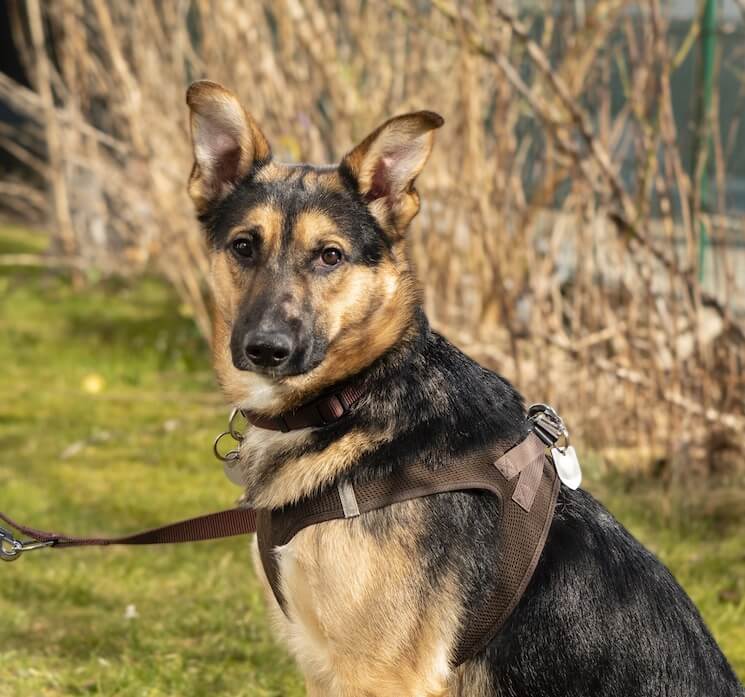
From Adobe Stock
Shepradors are known as reasonably easy dogs to train, as they are usually eager to please their owners. Most owners use the simple command and reward strategy to show their authority while offering some positive reinforcement. Here are some puppy training tips to help.
German Shepherd Lab mixes quickly learn that they get a reward for reacting and being responsive to the owner. They respond well to boundary-setting, so if you say ‘no’ and follow through with it, they should learn quickly. These dogs will respond to consistency during their training, so make sure that if you say no, do not go back on your word.
If you find that your German Sheprador is challenging to train, it’s possible that they are not getting enough exercise, so it’s a simple case of too much energy
Exercise
German Shepradors are an energetic breed that needs a lot of exercise to be happy and well-behaved. They require around 60 minutes of physical activity per day. If you don’t have time to take it on long walks, you should at least have a large backyard where it can run around.
German Shepherd Lab Mixes are not a good choice if you live in an apartment. However, if you only have a small backyard, it should be fine as long as you take your Sheprador on daily walks.
Mental Stimulation
The German Sheprador chews a lot, so make sure that you have plenty of toys around for them to chew on. This will prevent them from picking up your shoes or destroying the furniture. They may also need to be put outside or in a kennel when you leave the house so that they can’t chew through your possessions.
Plenty of playtime will stimulate the mental needs of a German Shepherd Lab mix, as they are alert and intelligent dogs who will be happier with some mental stimulation.
German Shepherd Lab Mix Health Issues
Health concerns in a German Shepherd Lab Mix can vary based on their genetic predispositions inherited from their parent breeds. While these dogs can be robust and healthy, owners need to be aware of potential health issues commonly associated with this hybrid breed. Here are some health concerns to keep in mind:
Hip Dysplasia
Both German Shepherds and Labrador Retrievers are prone to hip dysplasia, a genetic condition where the hip joint doesn’t develop properly. This can lead to pain and mobility issues. Regular exercise and maintaining a healthy weight can help reduce the risk.
Elbow Dysplasia
Elbow dysplasia is another joint disorder that can affect German Shepradors. It can lead to lameness and discomfort. Hence, proper nutrition, exercise, and weight management are crucial.
Bloat (Gastric Dilatation-Volvulus)
Large, deep-chested breeds like German Shepradors are at a higher risk of developing bloat, a potentially life-threatening condition where the stomach fills with gas and twists on itself. Feeding them smaller, frequent meals and avoiding strenuous exercise after eating can help reduce the risk.
Eye Issues
Both parent breeds may carry genetic eye conditions such as progressive retinal atrophy (PRA) or cataracts. Regular eye check-ups by a veterinarian can help identify and manage these issues early.
Heart Problems
Labrador Retrievers are predisposed to certain heart conditions, such as dilated cardiomyopathy (DCM). Regular veterinary check-ups and a healthy lifestyle can help monitor and manage these issues.
Obesity
German Shepradors can be prone to obesity, especially if not given enough exercise or if overfed. Obesity can lead to various health problems, including joint issues and diabetes. Maintaining a balanced diet and regular exercise are essential to prevent obesity.
Allergies
These dogs may be prone to skin allergies or food allergies, leading to itching, skin problems, and digestive issues. Identifying and managing allergens through dietary adjustments and veterinary guidance is essential.
Epilepsy
Seizures, often associated with epilepsy, can occur in German Shepradors. Medication and careful monitoring can help manage this condition.
Ear Infections
Labrador Retrievers, in particular, may be prone to ear infections due to their floppy ears. Regular cleaning and inspection of the ears can help prevent infections.
German Shepherd Lab Mix Cost
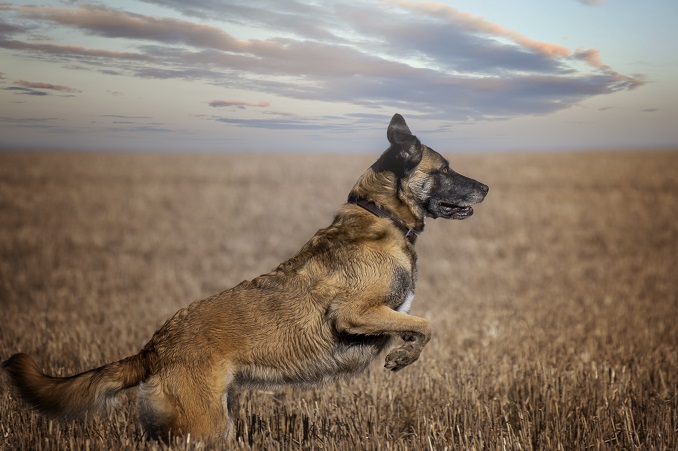
From Adobe Stock
The cost of owning a German Shepherd Lab Mix is relatively expensive. While they are not the most expensive dog to buy, they eat a lot and have a lot of ongoing needs you will need to pay for.
How Much is a German Shepherd Lab Mix?
A German Shepherd Lab Mix costs around $500 – $800. The actual price will depend on its lineage. As with all mixed breeds, how prized the parents are will contribute to the cost.
If you go to a shelter and find a Sheprador to rescue, this will be significantly cheaper than buying a puppy. Or you may be able to find an older dog to purchase from someone who can no longer take care of it. Again, you can expect to pay far less.
How Much Does It Cost to Raise a German Shepherd Mix?
The main expense of raising a German shepherd mix is the food costs. As they have a large appetite, they will eat about 3 cups of kibble each day, costing you roughly $50 – $70 a month.
Shepradors do require regular brushing and bathing. However, you can do this yourself, so it doesn’t have to cost a lot. Be aware that these dogs can quickly develop dental issues if you don’t maintain their dental health. This could be expensive if they do develop problems.
Should You Get a German Shepherd Lab Mix?
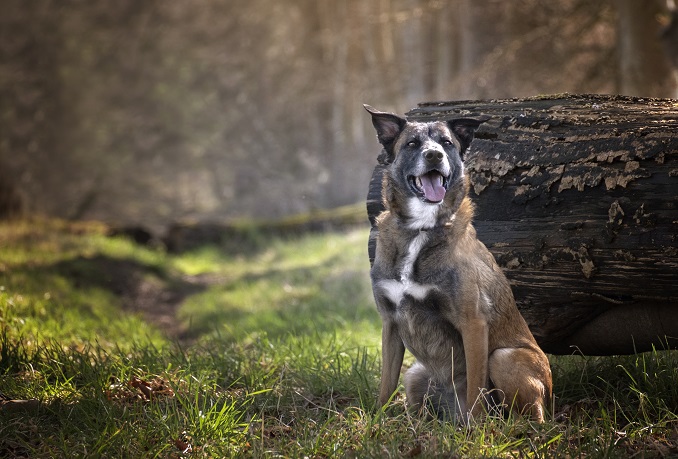
From Adobe Stock
German Shepherd Lab mixes are lively, loyal, and friendly dogs. They will be your best friend, protecting and loving you every day. However, if you are not ready to exercise them as much as they need or live in a small place, they may not be for you.
Shepradors are Suitable for:
Shepradors are suitable for families, as they have a nurturing disposition and love being around children. If you have a large backyard or are prepared to take them on plenty of long walks, they could be very happy with you. Make sure to set proper boundaries, and they should respond to your every command.
Shepradors are Not Suitable for:
Shepradors shouldn’t be purchased by people living in apartments or those with small backyards who will not frequently walk the dog. These people should consider getting a smaller breed with fewer exercise needs. A German Shepherd Lab Mix simply will not be happy if not getting enough exercise and may become destructive as a result.
Whether or not a Sheprador is right for you will highly depend on your living situation and how active you are willing to be. If you are ready to take care of a large, active dog, they could be your ideal companion.
FAQs on German Shepherd Lab Mixes
What does a German Shepherd Lab Mix look like?
German Shepradors typically have a medium to large-sized frame, and a double coat, and may come in various colors, including black, tan, sable, or a combination of these colors. They often have a strong and muscular build.
What is the temperament of a German Shepherd Lab Mix?
German Shepradors are known for their intelligence, loyalty, and friendly nature. They are generally good with families, children, and other pets, making them excellent companions.
Do German Shepherd Lab Mixes require a lot of exercise?
Yes, German Shepradors are energetic dogs and require regular exercise to stay healthy and happy. Daily walks, playtime, and mental stimulation are important for their well-being.
Are German Shepherd Lab Mixes easy to train?
Yes, German Shepradors are intelligent and trainable. They respond well to positive reinforcement training methods and enjoy learning new commands and tasks.
Do they shed a lot?
Yes, German Shepradors typically have a dense double coat and are known for shedding year-round. Regular brushing can help manage shedding.
Are there specific health concerns for this breed?
Yes, German Shepradors may be prone to health issues such as hip dysplasia, elbow dysplasia, bloat, eye issues, and obesity. Regular veterinary check-ups and a healthy lifestyle can help mitigate these risks.
How big do German Shepherd Lab Mixes get?
These dogs can vary in size, but they are generally medium to large-sized, with males standing between 24 to 26 inches at the shoulder and females slightly smaller at 22 to 24 inches. Weight ranges from 50 to 90 pounds.
Are they good family pets?
Yes, German Shepherd Lab Mixes can make excellent family pets. They are usually friendly, loyal, and protective, making them great companions for families and children.
Do they require a lot of grooming?
Yes, due to their dense double coat, German Shepradors require regular grooming, including daily brushing and occasional baths, to keep their coat healthy and reduce shedding.
A Remarkable Blend of Loyalty and Intelligence
The German Shepherd Lab Mix, or German Sheprador, is a remarkable and versatile breed that combines the best qualities of its parent breeds, the German Shepherd and the Labrador Retriever. I’ve had the privilege of sharing my life with two of these wonderful dogs, and I can confidently say they make exceptional pets.
One of the standout features of the German Sheprador is its balanced temperament. These dogs are highly intelligent, loyal, and friendly, making them not only excellent companions but also reliable and obedient. They are known for their adaptability and versatility, excelling in various roles, from family pets to working dogs.
For families, the German Sheprador is an ideal choice. They are generally good with children and other pets, known for their gentle and protective nature. With proper care, training, and love, the German Shepherd Lab Mix can undoubtedly become a cherished member of any household.
Other Labrador Retriever and German Shepherd Mixes
If you’re interested in learning about other German Shepherd mixes or Lab mixes, check out the hybrid dog breeds below.
Lab Mixes
- Pitbull Lab mix
- Blue heeler Lab mix
- Golden retriever Lab mix
- Rottweiler Lab mix
- Beagle Lab mix
- Border Collie Lab mix
- Husky Lab mix
- Australian Shepherd Lab mix
- Labrabull
- Labradoodle dog
- Boxador
- Mini Labradoodle
- Australian Labradoodle
German Shepherd Mixes
- German Shepherd Husky Mix
- German Shepherd Pit Bull Mix
- German Shepherd Border Collie Mix
- German Shepherd Rottweiler Mix
- German Shepherd Golden Retriever Mix
- German Shepherd Wolf mix
- Shepadoodle
- Miniature German Shepherd
- Shiloh Shepherd
- German Shepherd Chow Mix
- German Shepherd Corgi Mix
- German Shepherd Beagle Mix
- German Shepherd Doberman Mix
- German Shepherd Great Dane Mix
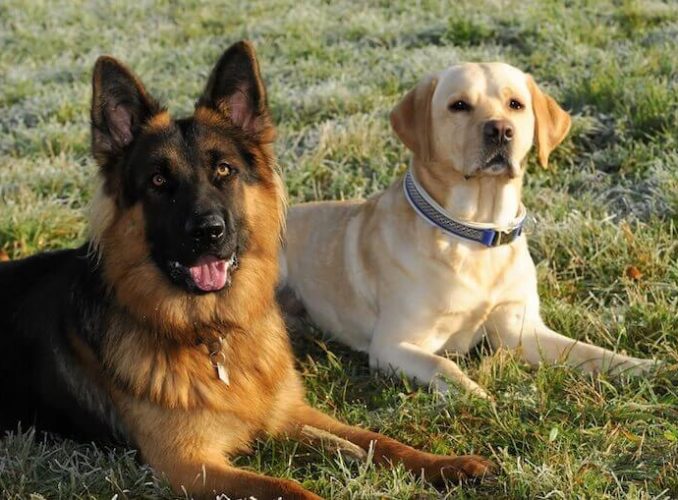
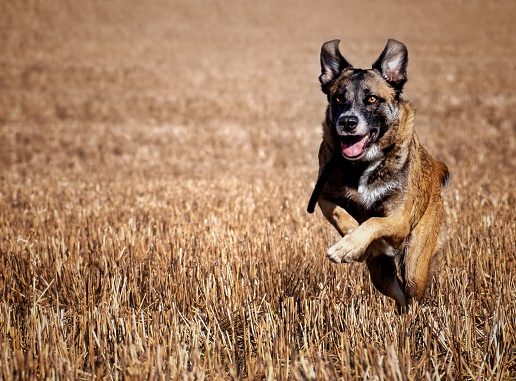
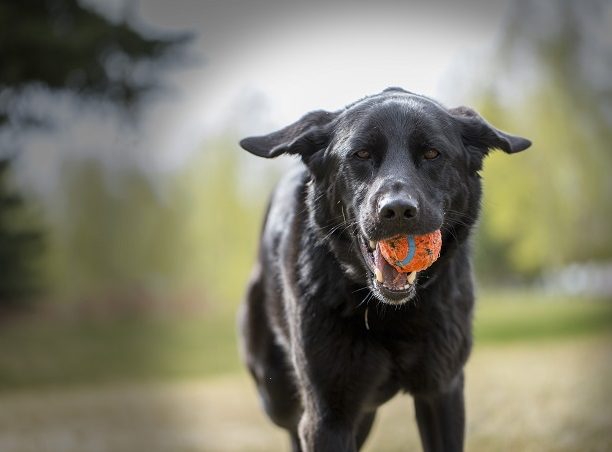
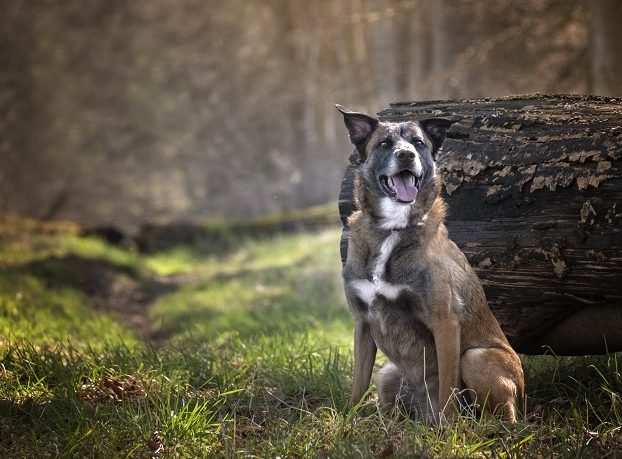

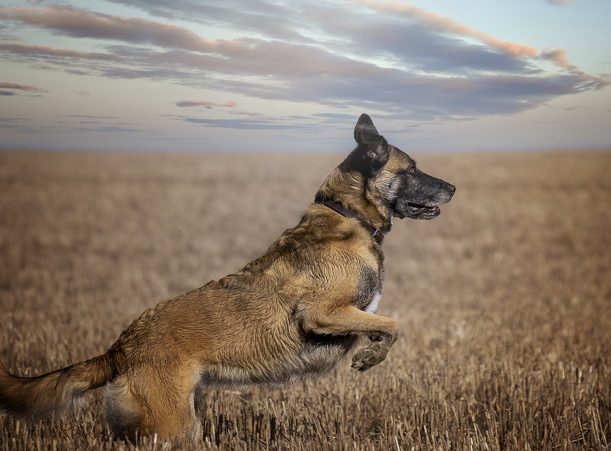
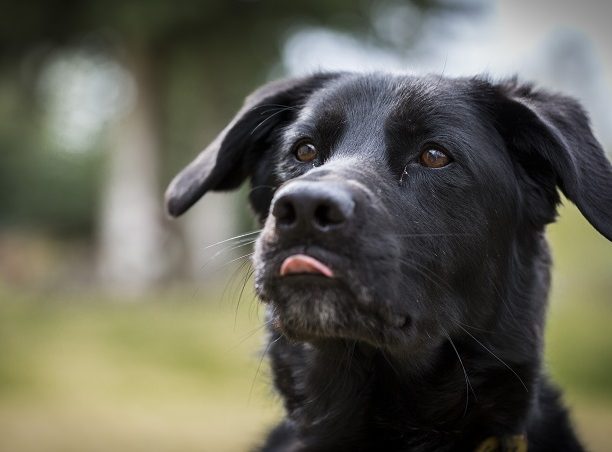
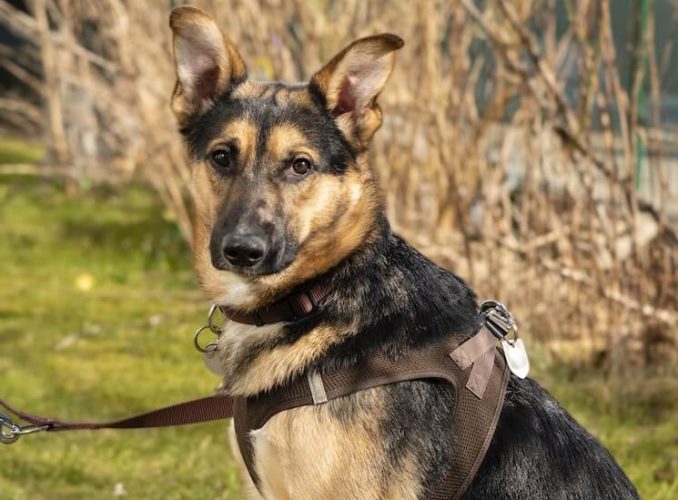

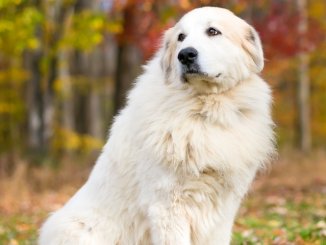


I adopted a German Shepherd mixed with a lab and he is a loving dog .
I’ve always found the Lab/Kelpie the best all-round dog. The best of both breeds 🙂 Though not handsome.
I just got a month old German Shepherd lab pup, he is the cutest I’ve seen in a while. He’s so sweet and he listens so well. He loves going to the park and he’s such a fat boy, loves his wet food mixed with dry. He’s brought me so much happiness into my life! I wish the life span for his breed was like a THOUSAND YEARS 😇 If you are considering getting a dog I recommend German Shepherd of course but one mixed with lab makes it better 💕 ALSO, my pup is potty trained only took him about a week! GET YOUR PUP AND LOVE HIM LIKE A CHILD 🐶🥰
How did you potty train so fast ?
Hi Steve, you can use our puppy weight calculator if you are concerned! If he is far behind the suggested minimum, then do contact a vet.
Hello everyone my 13 year old lab Shepard mix daisy just passed. I’m going to tell everyone now she was the smartest, kindest , listened to everything you would say she would not come in the kitchen never we told her once that was or. We could leave her on the lawn out front and she would not move unless me or the husband told her guarded me and the girls like we were her children but never barked or growled unless she deemed someone shady. She never once came to the table for good she would sit up with head held up and when we would give her Hunan food into her food bowl and she would go and meet me there. Never came up the stairs unless she was scared of thunder her only weakness. In my opinion the best mixed breed I have had the pleasure to own. Thanks for reading.